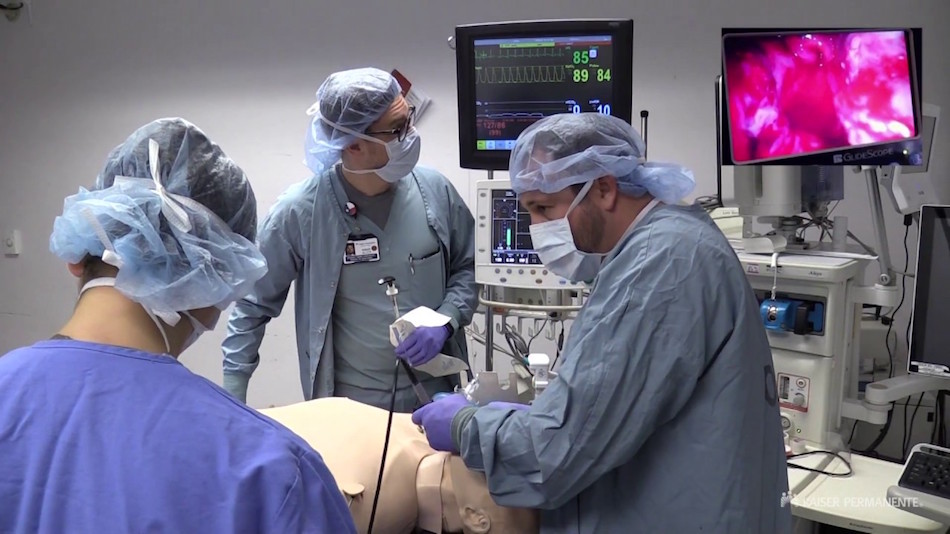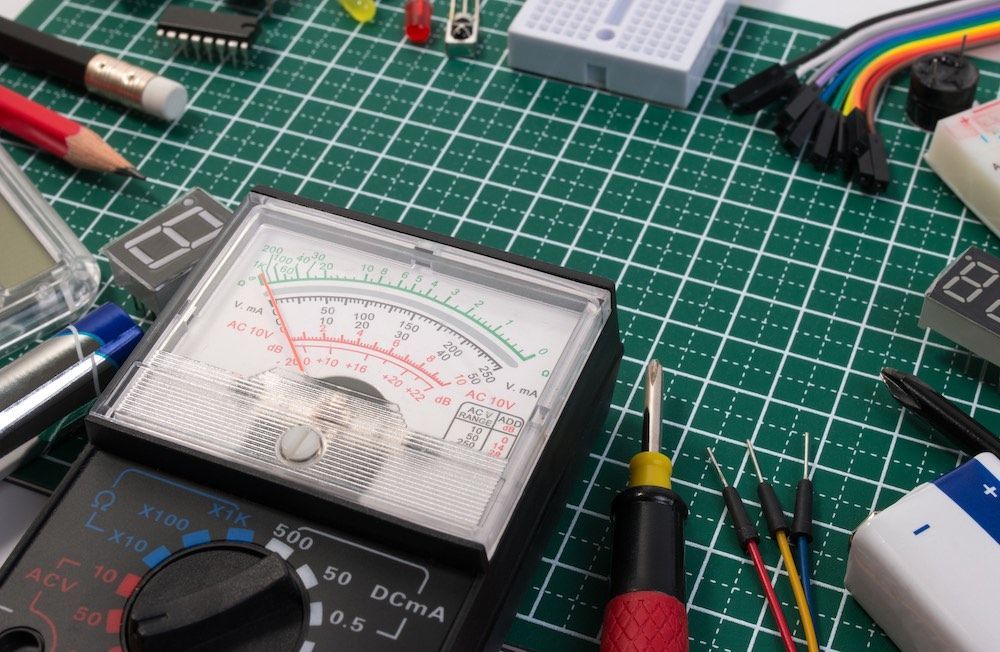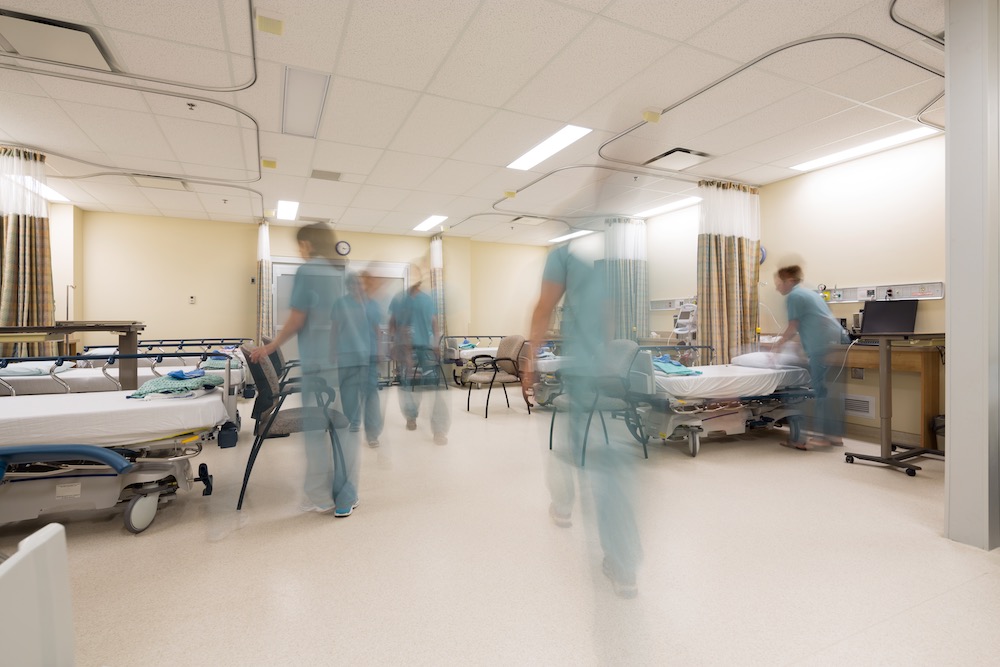Healthcare Simulation plays a key role at the Kaiser Permanente School of Anesthesiology (KPSA) Nurse Anesthetist program. So much so, that KPSA has developed a series of brief “Trigger” video vignettes that focus on clinical crises, ethical dilemmas or errors related to human factors all of which utilize medical simulation. The videos were originally created as learning tools and triggers for discussion amongst students in the Anesthesiology program in Pasadena. However, the videos have become so popular that they are now being viewed by other schools, medical centers and healthcare administration personnel across the world. Kaiser Permanente now shares their free videos with everyone by posting them on their own YouTube channel. Read below to learn more about where to watch these videos and about the KPSA program!
About the KPSA School
The school, which opened in 1972 originally admitted 10 students. In 1978 in conjunction with California State University Long Beach, the Kaiser Permanente School of Anesthesia offered the first master’s level degree awarded in the United States, Master of Science in Nursing with a clinical specialty of nurse anesthesiology. More recently, when KPSA became affiliated with California State University Fullerton, the program evolved into a 110 unit, three year sequential academic and clinical graduate program of study ending in a Doctor of Nursing Practice degree with a concentration in Nurse Anesthesia. The program currently admits 30 to 35 applicants. Staff writer Dr. Kim Baily spent some time with the KP team recently to learn more about how they utilize medical simulation in their training program.
The total cost of the program is approximately $100k with the majority of fees covering the cost of 9 semesters at CSUF. Graduates are not required or expected to work for Kaiser Permanente upon graduation. Graduates are found in a variety of healthcare institutions including military facilities although one out of every two nurse anesthetists in California has been educated at KPSA.
In 2006, the first 215 sq. ft. KPSA simulation lab was opened and in 2019, a second state of the art lab (215 sq. ft.) was added with updated anesthesia equipment. The KPSA faculty recognize that learners may find simulation stressful, therefore faculty remain in the simulation lab during the early terms of the program guiding and encouraging students as they progress through various scenarios. As the learning concepts advance in complexity, faculty operate scenarios remotely so that learners can develop independent decision making and team communication skills. No grading is based on simulation and none of the simulations are recorded. Debriefing is conducted in informal group settings.
Students are assigned to simulation lab for 8 hours each semester and by graduation time, students have completed 20 different clinical scenarios.
Kaiser Permanente Healthcare Simulation Trigger Films
Immersive learning involving multiple sensory and cognitive inputs is a well-established method for educating healthcare practitioners. After recognizing the importance of immersive learning, KPSA created a series of Trigger Films to challenge their learners. Since communication and other soft skills are a recognized source of patient error, KPSA made team skills and communication important components of their videos.
The videos particularly focus on rare events, critical events, and crisis events. The videos maybe presented by a single faculty member and maybe used to initiate discussions and learner interaction. The videos range in complexity by addition of clinical data. Some videos show the appropriate practitioner interventions whilst others deliberately show mismanagement of a particular topic.
Dr. Sass Elisha, EdD, CRNA, FAAN, Assistant Director of the KPSA and Dr. Jeremy Heiner, EdD, CRNA Academic and Clinical educator introduce the videos on the YouTube channel as seen below. Dr. Jason Cheng, along with Drs. Elisha and Heiner were responsible for the production OR crises checklist trigger films.
Currently, there are over 50 videos in the collection arranged into playlists. Playlist examples include the following:
- Operating Room Checklists
- Waste Anesthetic Gas Management
- Time Out
- Difficult Airway
- Student Videos.
- Hemorrhage
- Cardiac Arrest
- Anaphylaxis
- Hyperthermia.
Anesthesia Simulation plays an integral role in the Kaiser Permanente School of Anesthesia (KPSA) Nurse Anesthetist program. In addition, the school has shared its series of “Trigger Videos” without cost to everyone via the KP YouTube Channel. Thank you to Dr. Elisha for providing information for this article!
Watch All 50 Sim Videos on the KPSA Youtube Channel Today!
Today’s article was guest authored by Kim Baily PhD, MSN, RN, CNE, previous Simulation Coordinator for Los Angeles Harbor College and Director of Nursing for El Camino College. Over the past 16 years Kim has developed and implemented several college simulation programs and previously chaired the Southern California Simulation Collaborative.
Have a story to share with the global healthcare simulation community? Submit your simulation news and resources here!












